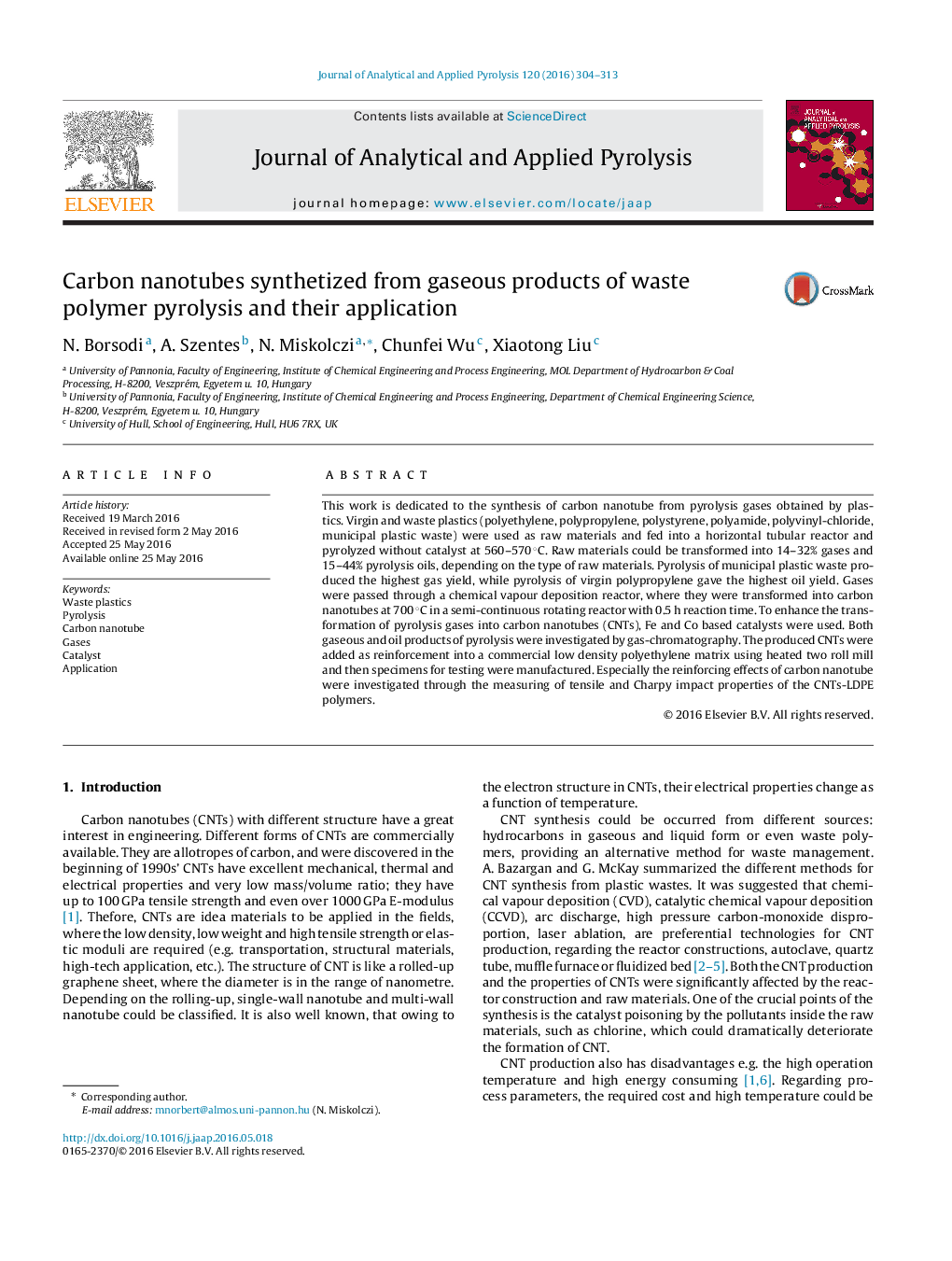| Article ID | Journal | Published Year | Pages | File Type |
|---|---|---|---|---|
| 1196555 | Journal of Analytical and Applied Pyrolysis | 2016 | 10 Pages |
•Carbon nanotube was synthetized from gaseous products produced from pyrolysis of waste plastics.•CNT yield was affected by contaminants.•Polyamide in the raw material had an advantageous effect to the conversion of CNT production.•CNTs were tested for reinforcing LPDE.
This work is dedicated to the synthesis of carbon nanotube from pyrolysis gases obtained by plastics. Virgin and waste plastics (polyethylene, polypropylene, polystyrene, polyamide, polyvinyl-chloride, municipal plastic waste) were used as raw materials and fed into a horizontal tubular reactor and pyrolyzed without catalyst at 560–570 °C. Raw materials could be transformed into 14–32% gases and 15–44% pyrolysis oils, depending on the type of raw materials. Pyrolysis of municipal plastic waste produced the highest gas yield, while pyrolysis of virgin polypropylene gave the highest oil yield. Gases were passed through a chemical vapour deposition reactor, where they were transformed into carbon nanotubes at 700 °C in a semi-continuous rotating reactor with 0.5 h reaction time. To enhance the transformation of pyrolysis gases into carbon nanotubes (CNTs), Fe and Co based catalysts were used. Both gaseous and oil products of pyrolysis were investigated by gas-chromatography. The produced CNTs were added as reinforcement into a commercial low density polyethylene matrix using heated two roll mill and then specimens for testing were manufactured. Especially the reinforcing effects of carbon nanotube were investigated through the measuring of tensile and Charpy impact properties of the CNTs-LDPE polymers.
